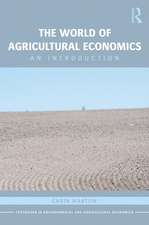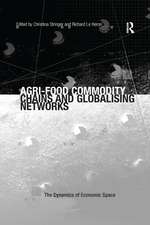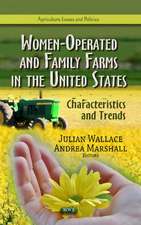Economic Spaces of Pastoral Production and Commodity Systems: Markets and Livelihoods
Autor Richard Le Heron Editat de Jörg Gertelen Limba Engleză Hardback – 28 dec 2011
| Toate formatele și edițiile | Preț | Express |
|---|---|---|
| Paperback (1) | 469.34 lei 6-8 săpt. | |
| Taylor & Francis – 15 noi 2016 | 469.34 lei 6-8 săpt. | |
| Hardback (1) | 1065.78 lei 6-8 săpt. | |
| Taylor & Francis – 28 dec 2011 | 1065.78 lei 6-8 săpt. |
Preț: 1065.78 lei
Preț vechi: 1299.73 lei
-18% Nou
Puncte Express: 1599
Preț estimativ în valută:
203.94€ • 213.36$ • 169.41£
203.94€ • 213.36$ • 169.41£
Carte tipărită la comandă
Livrare economică 02-16 aprilie
Preluare comenzi: 021 569.72.76
Specificații
ISBN-13: 9781409425311
ISBN-10: 1409425312
Pagini: 362
Dimensiuni: 156 x 234 x 21 mm
Greutate: 0.77 kg
Ediția:1
Editura: Taylor & Francis
Colecția Routledge
Locul publicării:Oxford, United Kingdom
ISBN-10: 1409425312
Pagini: 362
Dimensiuni: 156 x 234 x 21 mm
Greutate: 0.77 kg
Ediția:1
Editura: Taylor & Francis
Colecția Routledge
Locul publicării:Oxford, United Kingdom
Notă biografică
Jörg Gertel, Leipzig University, Germany & Richard Le Heron, The University of Auckland, New Zealand
Recenzii
'... the book and especially the discussion in the concluding chapter provide an excellent starting point from which a more generalised assessment can be debated. As such, this is an invaluable book for all scholars of agrifood systems analysis, with insights readily extended from pastoralism to other forms of production.' New Zealand Geographer
Cuprins
I: Pastoralists in the Market; 1: Introduction: Pastoral Economies Between Resilience and Exposure; 2: Theoretical Plurality in Markets Conceived as Social and Political Institutions; 3: Social Vulnerability and Livelihood Security: Towards an Integrated Framework for Market Risk Assessment; II: From Subsistence to Market Production: Post-Colonial Africa; 4: Livestock Production and Pastoral Livelihood Security in Western Chad; 5: Pastoral-Sedentary Market Relations in a War Situation: The Baqq?ra-Nuba Case (Sudan); 6: Pastoral Integration in East African Livestock Markets: Linkages to the Livestock Value Chain for Maasai Pastoral Subsistence and Accumulation; 7: Livestock Marketing Chains in Northern Kenya: Re-Aligning Exchange Systems in Risky Environments; 8: Market Spaces in a Globalising Periphery: Livestock Trade, Borders, and Liberalisation in Eastern Morocco; III: From State to Market Production: Post-Socialist Contexts; 9: Pastoralism in the Pamirs: Regional Contexts, Political Boundaries, and Market Integration in Central Asia; 10: Mongolian Pastoral Economy and its Integration into the World Market Under Socialist and Post-Socialist Conditions; 11: Nomads and their Market Relations in Eastern Tibet's Yushu Region: The Impact of Caterpillar Fungus; 12: Capitalism in the Tundra or Tundra in Capitalism? Specific Purpose Money from Herders, Antlers, and Traders in Yamal, West Siberia; IV: From Commercialised Production to Integrated Markets; 13: Livestock Markets and Drought in Sub-Saharan Africa; 14: The UK Sheep Industry: An Introduction to its Pastoral System and Approach to Marketing and Breeding; 15: Market-Making and Livelihood Challenges in Contemporary New Zealand's Dairy and Sheep Pastoral Economies; 16: Contested Market-Relations Around Value and Values: Live Sheep Exports from Western Australia; 17: Conclusion: Embodied Risks of Exchange Relations
Descriere
Pastoralism as a land use system is under recognized in terms of its contribution to food provision and livelihoods as well as to human security.This book is the first attempt to explore the dynamics of economic spaces of pastoral production and commodity systems for explicit South and North positionings. It develops and applies a new approach in combining agri-food, market and commodity chain perspectives with livelihood approaches. This enables new understandings of re-aligning exchange relations between the global south and the global north.















